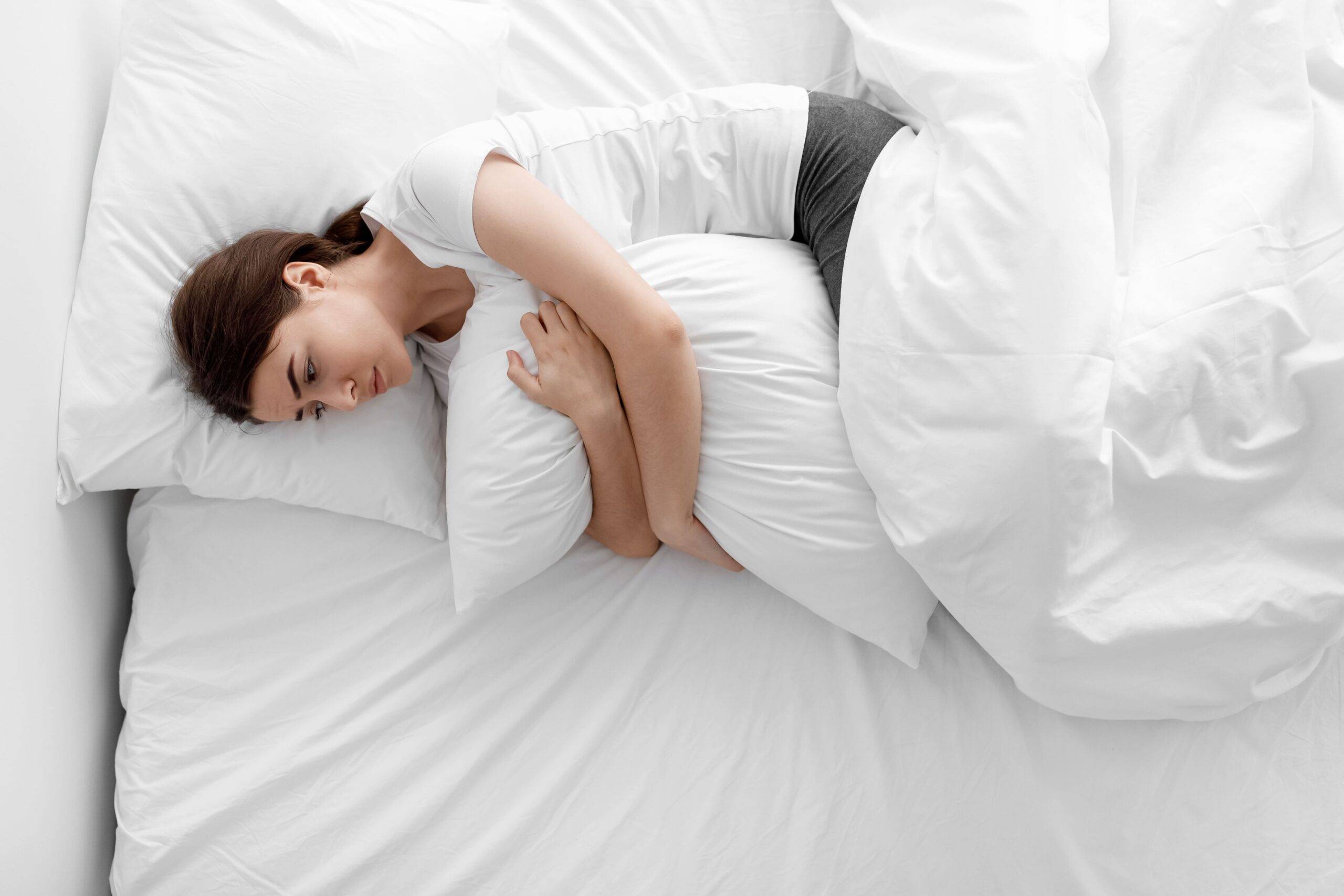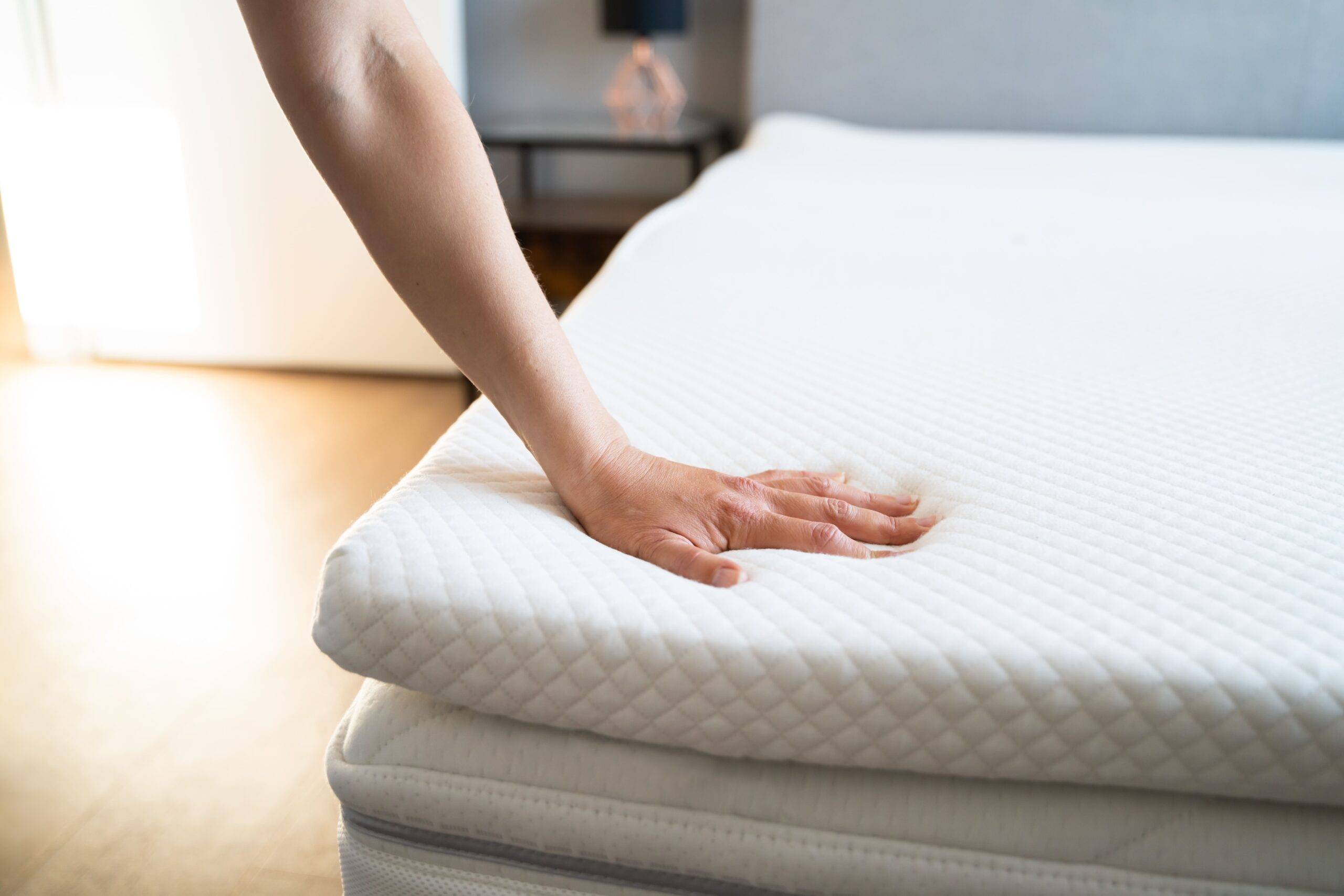By Dr. Richard Thompson, DC
5 Minute Read
We have all heard about the proven benefits of getting enough quality sleep on our overall health. When it comes to pain, however, we don’t always know how sleep factors, such as body position, pillow, and mattress selection, can negatively impact our physical health, especially if we are already dealing with an injury.

Sleep Positions for Shoulder Pain
Shoulder injuries and sleep positions are very often a problem, as it’s difficult find a position with your injured shoulder that is comfortable and doesn’t aggravate the pain. Even if you’re not injured, certain sleep positions can actually create shoulder problems, since our shoulders are in these compromising positions for many hours on end.
The biggest no no when it comes to shoulder pain prevention with sleep is to avoid sleeping with your arm or arms hiked up under your head/pillow. This is common for side and stomach sleepers. I often see this as a sign that your pillow is not supporting your head/neck adequately. For stomach sleeping, which we rarely ever encourage you to do because of the strain on the neck, it is quite awkward to keep your arms down by your side, so it’s ideal to avoid this position for sleeping all together. Whether you’re a side or stomach sleeper, the goal is to keep your arms below shoulder height so that the structures of the shoulder aren’t being ‘pinched’ in the joint. A good trick for side sleeping is to hug a large pillow in front of you, which will help keep your bed-side arm from sliding up under your pillow. If you tend to put your arm under your pillow, consider switching into a thicker or denser pillow that provides more support to your head/neck. If you’re a back sleeper and you’re dealing with a shoulder injury, such as adhesive capsulitis or frozen shoulder, it might be painful to lay flat on your back. One strategy would be to prop up your shoulder and shoulder blade with a thin pillow or pregnancy ‘wedge’ pillow so that your shoulder is supported and does not ‘fall’ back on the mattress.

Sleep Positions for Low Back and Hip Pain
Low back pain is the most common musculoskeletal problem and is frequently the cause of interrupted and reduced sleep. Whether you have low back or hip pain, sleeping on your side with a pillow between your knees is a great measure to take to reduce rotation through your hips, pelvis and low back, which helps keep your spine in a more neutral, symmetrical position. Using a long, king sized pillow between your knees will allow you to hug the same pillow, which puts your shoulders in a safe sleeping position. As a back sleeper, using a pillow under your knees to elevate your thighs can help reduce strain on your low back, reduce the pull on your hip flexors, and minimize stress on your hip capsule if suffering from osteoarthritis. As a stomach sleeper, a flat pillow under your pelvis can also reduce the amount of extension in your low back, taking pressure off of the joints in the lumbar spine. If you are experiencing lateral hip pain, such as hip bursitis, sleeping on the hip that is in pain is likely not possible. In some cases however, it is the only position people can sleep in. In this situation, I recommend surrounding the affected hip with a pillow case that has been twisted and tied into a ring. With this ‘band’ under your hip and surrounding the inflamed bursa, it helps reduce the amount of pressure on the hip from the mattress and may allow you to sleep on the affected side. If you are dealing with a low-back disc injury/herniation that is causing nerve pain down one leg, it might be advisable to sleep on the non-affected side with a thin pillow under your pelvis. This creates a ‘tilting’ of the spine away from the painful side, which can help reduce the compression on the injured disc, which in turn can help with the nerve pain. Regardless of which recommendation you implement, it is important to always listen to your body and find a sleep position that minimizes or eliminates symptoms.

Pillow Recommendations For Neck Pain
Next to low-back pain, neck pain is one of the most common reasons for patient visits at the clinic, and quite often, pillow types are a major contributor to the symptoms. The key for proper pillow support is for the pillow to maintain neutral neck posture while laying down. This support should be targeted under the neck, regardless of whether you are a side or back sleeper. The most common issues I see with pillow use are both the wrong selection of pillow thickness as well the wrong positioning of the head/neck on the pillow.
When selecting a pillow by thickness for side sleeping, consider the width of your shoulders, as this will have the biggest impact on how high your neck and head lay above your mattress if you were to hold your neck in a neutral (straight) position. The pillow should be thick enough to fill in that space between your neck and the mattress, but also not too thick or dense, causing your head to be pushed up away from the mattress. If you tend to move from your sides to your back while sleeping, your pillow needs to be slightly less dense/thick, in order to avoid having your neck pushed into flexion while laying on your back. When positioning yourself on your pillow, place the pillow as high up on your mattress against the headboard or wall. Then lay as high up on the pillow as possible so that the pillow material fills into the space between the base of your head and the top of your shoulders.
There are many types of pillows on the market varying by material, design, shape, and speciality, while some pillows are designed for specific sleep positions. In my practice, I recommend using water-based pillows for a number of reasons. Firstly, water-based pillows, which have a water bladder under the thin layer of cushioning, are versatile in their support. You decide how much support the pillow provides by controlling how much water is added into the bladder. This provides a personalized pillow that meets your specific comfort and support needs. Secondly, the water in the bladder is pushed towards your neck when the weight of your head presses down on it, focusing the support where you need it. This support also remains under your neck as you change positions since the weight of your head will always push the water towards the neck. Lastly, water pillows are heavy and will typically stay in place on the bed. By positioning the pillow high up against your headboard and laying correctly on the pillow, the support is likely to stay under your neck for the duration of your sleep. Most of these benefits are unique to water-based pillows.

Mattress Considerations
Mattress design plays a significant role in how well our bodies function after a night’s sleep. Here are just a few final considerations to keep in mind:
- Mattresses typically have a 10 year lifespan at the most. If you find you are waking up stiff, sore, or in pain, with no apparent change in your day to day lifestyle, consider investing in a new mattress.
- The vast majority of people will benefit from a firm mattress, but your comfort and preference will dictate how firm the mattress should be.
- Consider a mattress with a thin or no pillow-top, which is a layer of cushioning affixed to the top of the actual mattress. These mattress styles are typically called ‘tight top’ or ‘Euro top’ mattresses. Mattresses with thick pillow-tops tend to reduce the firmness of the mattress.
- My personal preference for a mattress design is pocket-coil, which have been used for decades, and tend to be more durable and extend the life of the mattress compared to more mass produced memory foam mattresses.
- Don’t let the sale price of the mattress tell you how ‘good’ the mattress is for you. Ask about the design and material of the mattress and lay on at least three similar mattresses to compare comfort in your typical sleep position(s). Try to purchase from a retailer that has a 100 day trial period so that you can return the mattress should it turn out not to be the right mattress for you.
While the information above are simply recommendations and guidelines that I find to be of benefit to many patients, it is important that you listen to your body and how it responds to implementing any new position or pillow type. As always, if you are struggling with any pain or injury that does not seem to be improving even after making lifestyle changes and modifications to your sleep parameters, we recommend you consult a qualified healthcare professional for a diagnosis, so that you can be informed of the appropriate measures to take to resolve your condition quickly and permanently.

